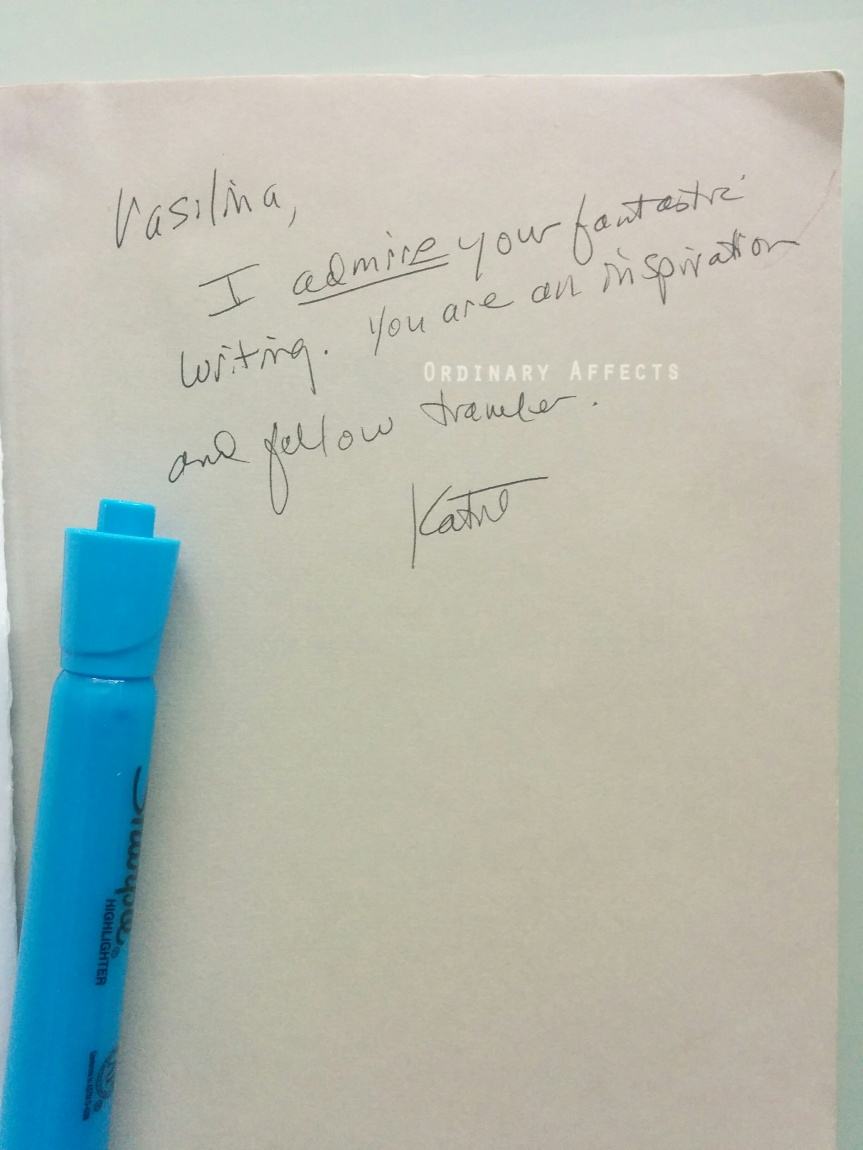I have known long and well enough some of my acquaintances to get to know the repertoire of their stories, which they repeat on different occasions with slight alterations. These modifications tell more than the stories themselves. The storytellers know I know their stories, but it by no means prevent them from repeating them, and me from listening. I forget details too, and listening to them over and over again, I am involved in a process of recollecting and re-membering. With stories polished by the author to the point that their flow is never interrupted, it is sometimes difficult to tell if they adjust the details, or I mis- and dis-remember them. Either way, into these discrepancies, inconsistencies, and gaps, something important fells. Ideally I’d like to decipher several recordings of one story and analyze them. It could make a compendium, an ideal book of one story, perhaps a story not even significant itself, but acquiring meaning through attentive reading.
In detecting the repeated stories, timing, a personal timing, becomes of substance. Kathleen Stewart in her “A Space on the Side of the Road” describes her method as follows:
“The project has itself been a process of re-membering and retelling, and the resultant account stands as an allegory of the cultural processes it is trying to represent. In began with two years of fieldwork from August 1980 to September 1982 and continued through a dozen return visits in the years that followed and through the twists and turns of field notes, tape recordings, memories, photographs, phone calls, postcards, letters, telegrams, and professional papers. One time, it has become a process of long dwelling on things re-membered and retold, forgotten and imagined.” (Stewart, 1996, 7)
As she was forced to rely on memory on a number of occasions, she fell in the gaps by re-listening to the same stories time and again. (Stewart, 1996, 8)
I had long imagined a book which would envelop all variants of “Leaves of Grass,” for example, not only the first and the final versions of it, but all the intermediate versions. (And this is, too, not the first time I speak about such an edition. My second or perhaps even the third reiteration of this next to impossible for materialization, idea, adds a metapragmatic tinge to the project of collecting a compendium of one story; a collection of stories consisting of infinite repetitions of one episode.
Why people repeat stories, might be another question to ask. Does not life in its overabundance of stories offer us infinite possibilities to create and recreate themselves through different narrations, why focus on the same plot? What is in the repetition? Why we prefer to stick to the same stories, retelling them over and over again? Perhaps by way of repetition we create a space of certainty, a reliable narration, and, in the end of it, a reliable narrator–the narrator who could be believed precisely because she deviates and digresses, and her story forks into a bunch of stories, tale bifurcates into a spectrum of tales without losing its identity.
Reference
Stewart, Kathleen. A Space on the Side of the Road. Princeton University Press. Princeton, New Jersey, 1996.


